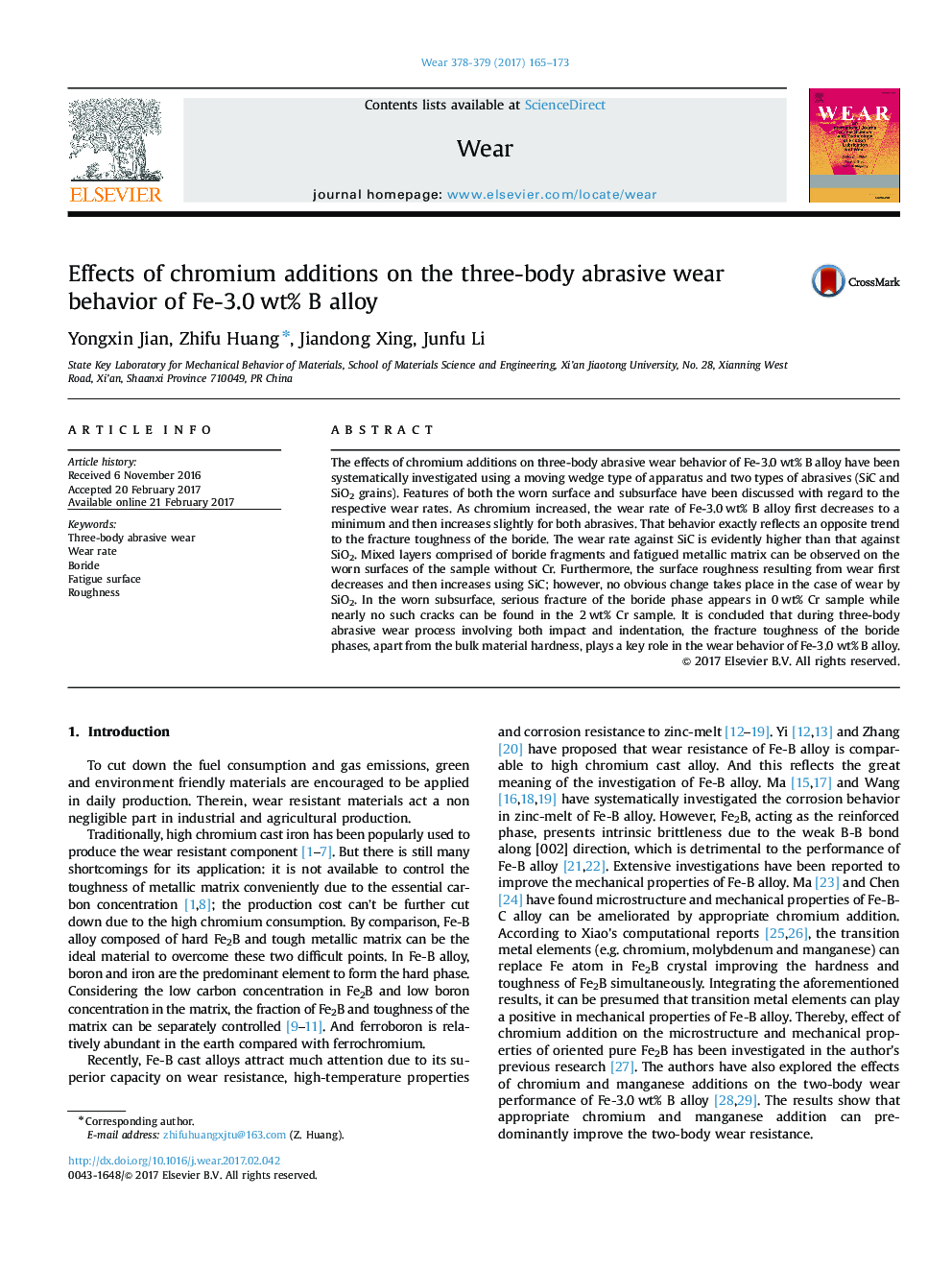| Article ID | Journal | Published Year | Pages | File Type |
|---|---|---|---|---|
| 4986652 | Wear | 2017 | 9 Pages |
Abstract
The effects of chromium additions on three-body abrasive wear behavior of Fe-3.0Â wt% B alloy have been systematically investigated using a moving wedge type of apparatus and two types of abrasives (SiC and SiO2 grains). Features of both the worn surface and subsurface have been discussed with regard to the respective wear rates. As chromium increased, the wear rate of Fe-3.0Â wt% B alloy first decreases to a minimum and then increases slightly for both abrasives. That behavior exactly reflects an opposite trend to the fracture toughness of the boride. The wear rate against SiC is evidently higher than that against SiO2. Mixed layers comprised of boride fragments and fatigued metallic matrix can be observed on the worn surfaces of the sample without Cr. Furthermore, the surface roughness resulting from wear first decreases and then increases using SiC; however, no obvious change takes place in the case of wear by SiO2. In the worn subsurface, serious fracture of the boride phase appears in 0Â wt% Cr sample while nearly no such cracks can be found in the 2Â wt% Cr sample. It is concluded that during three-body abrasive wear process involving both impact and indentation, the fracture toughness of the boride phases, apart from the bulk material hardness, plays a key role in the wear behavior of Fe-3.0Â wt% B alloy.
Related Topics
Physical Sciences and Engineering
Chemical Engineering
Colloid and Surface Chemistry
Authors
Yongxin Jian, Zhifu Huang, Jiandong Xing, Junfu Li,
